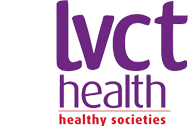Populations we Serve
Our work ensures the communities we serve live healthy and empowered lives
We give special attention to individuals with the greatest vulnerability to HIV/TB infection and those with specific service needs.
Addressing HIV among Adolescents and Young People particularly girls and young women
In Kenya, half of all new HIV infections occur among adolescents and young people. Among these, young individuals account for a significant portion of new HIV infections, influenced by factors such as poverty and low education levels.
To address HIV among adolescents and young people, we provide comprehensive information on HIV, reproductive health, and community resilience through our one2one online integrated digital platform and peer mentors in schools and community settings. Our services include HIV testing and counselling, evidence-based prevention interventions, and ongoing care and treatment, all designed to be youth-friendly by actively involving young people in their development and implementation.
Additionally, we offer a range of reproductive health services, including cervical cancer screening, STI screening and treatment, pregnancy screening, and referrals for Ante Natal Clinics (ANC). Our HIV prevention. initiatives also focus on structural interventions that promote economic empowerment, cash transfers, and education subsidies to reduce vulnerability among young individuals.

HIV Vulnerability in Fishing Communities
Individuals living in fishing communities worldwide are found to be five to ten times more vulnerable to HIV than those in other communities. Factors such as inconsistent condom use, transactional sex, and multiple sexual partnerships contribute to the high HIV burden. It is estimated that 24-30% of this population is living with HIV, with prevalence rates four times higher than the national average of 5.6%.
To address HIV among these communities, we provide:
- Risk assessment and risk reduction counselling
- Peer education and promotion of safer sexual behaviors
- Information and provision of Post Exposure Prophylaxis (PEP)
- HIV testing services, health education, and knowledge of HIV status
- STI screening and treatment, along with access to male and female condoms
- HIV care and treatment
- Referral for Voluntary Male Medical Circumcision (VMMC)
- TB screening and treatment
- Entrepreneurship and income supplementation
- Services for the prevention and mitigation of violence in community setting
- Stakeholder engagement and mobilization at the community level

Preventing HIV among People Who Inject Drugs
The use of alcohol and other recreational drugs can impair judgment and increase the risk of infections such as HIV, tuberculosis, and viral hepatitis B and C (HBV and HCV). Within this group, the risk of HIV is significantly heightened when needles are shared. Although less than 1 in 1,000 Kenyans inject drugs, this group accounts for 4% of new HIV infections.
To help prevent HIV among people who inject drugs, we offer a variety of services, including:
- HIV prevention education and skill-building
- Risk assessment and risk reduction counselling
- Distribution and collection of sterile needles and syringes
- Preparation and linkage to Medication-Assisted Treatment (MAT)
- Nutrition support for MAT clients
- Outreach and advocacy at high-risk locations
- STI screening and treatment
- HIV Prevention services
- HIV Testing and Counselling services
- HIV Care and treatment
- TB screening and treatment
- Post Exposure Prophylaxis (PEP)
- Comprehensive Reproductive Health services, including cervical cancer screening
- Access to Anti-Retroviral Therapy (ART)
- Pre-Exposure Prophylaxis (PrEP)

People Living with HIV (PLHIV)
In Kenya, over 1.4 million people are living with HIV. At LVCT Health, we are committed to helping these individuals receive the care and support they need to lead healthy, fulfilling lives. As a strategic partner in Kenya’s national and sub-national HIV response, we offer technical support and guidance to achieve the global 95:95:95 targets by 2025 and end AIDS by 2030.
The global 95:95:95 targets, aim to:
- 95% of all people living with HIV know their status
- 95% of all people with a diagnosed HIV infection receive sustained antiretroviral therapy
- 95% of all people receiving antiretroviral therapy have viral suppression
Our work focuses on several key areas, including:
- Increasing demand for and access to quality HIV treatment and prevention services
- Increasing the use of quality Reproductive, Maternal, Newborn, Child and Adolescent Health and Nutrition services.
Strengthening capacity of county health systems, local partners and communities to deliver quality health services.

Persons with Disabilities
According to the WHO, over one billion people globally experience disabilities, which translates to 1 in 7 people worldwide. Persons with disabilities (PWD) have the same healthcare needs as others; however, they are twice as likely to encounter inadequate skills among healthcare providers and in health facilities. Although the connection between HIV and disability often goes overlooked, PWD are at a higher risk of exposure to HIV. Common misconceptions suggest that individuals with disabilities may not be sexually active or engaged in other behaviors that carry risk.
At LVCT Health, we offer a comprehensive range of HIV services tailored for individuals with disabilities. We provide accessible resources for the deaf using Kenyan Sign Language and for visually impaired individuals through Braille and typing services.
In 2012, LVCT Health pioneered the first national Disability Sensitization Conference in partnership with the Ministry of Health, National AIDS Control Council, NASCOP, CDC, and various Disabled Persons Organizations (DPOs).
- We employ trained deaf and hearing service providers proficient in sign language to facilitate communication.
- We offer Information, Education, and Communication (IEC) materials that include sign language, writing, and typing resources.
- We provide IEC materials in Braille for visually impaired individuals.
- Creating demand for increased service uptake.
- Undertaking income-generating activities (IGAs) for improved livelihoods and sustainability.
- Engaging in advocacy to enhance access to healthcare services that meet the needs of PWD.
- Promoting meaningful engagement of members in policy discussions.
